
Alert:


Experience Fairfax 250. Celebrate America’s 250th anniversary by walking the grounds of historic sites, exploring nature parks and trails and stepping into the stories that shaped our nation. Take part in living history events, join hands-on programs, hike with guides and engage in community celebrations that honor the past, highlight the present and shape the future.
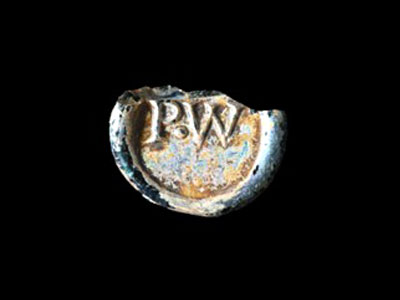
A seal stamped into a glob of hot glass and placed on a bottle’s shoulder identified the product or the bottle’s owner. This glass seal likely marked a bottle that belonged to Peter Wagener, a wealthy 18th-century landowner in eastern Fairfax County.
Join guided tours that honor our shared past. With docents, interpreters and living history programs, Fairfax County’s historic sites invite you to see, learn and connect with America’s story.
Step inside a working 19th-century gristmill and see flour and cornmeal being ground the same way it was in 1811. Explore the grinding floor, the gear pit and learn how innovation and community shaped life at Colvin Run.
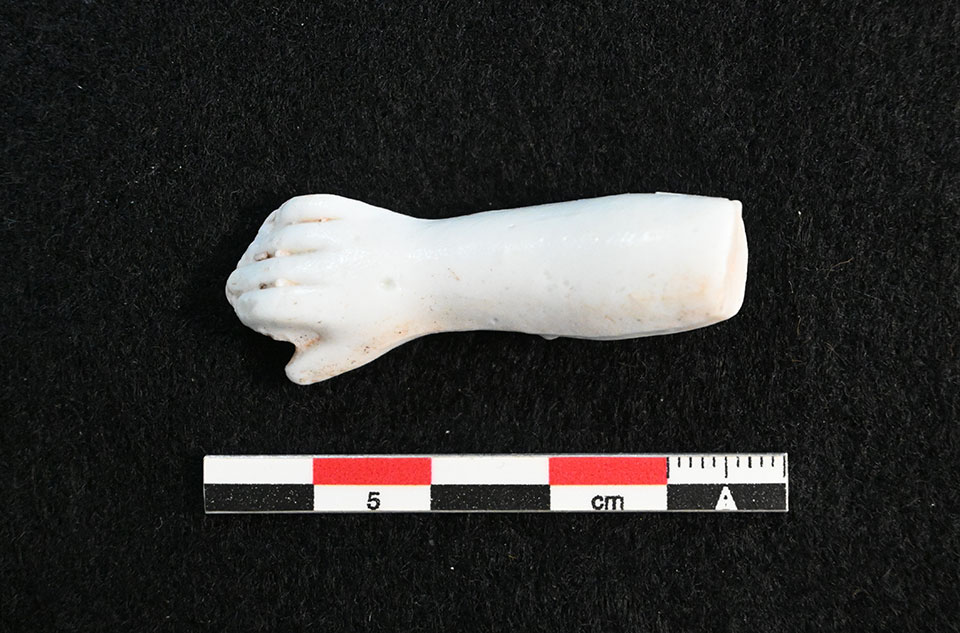
Families who operated Colvin Run Mill lived in the circa 1809 miller’s house. Between 1883 and 1934, Addison and Emma Millard lived there with several of their 20 children. This porcelain doll’s arm may have been part of a toy belonging to one of the Millard children.
Visit the 1784 house at Green Spring Gardens and uncover stories of its early owners and the enslaved people who lived there. Learn how this home evolved into today’s horticultural and historic destination.
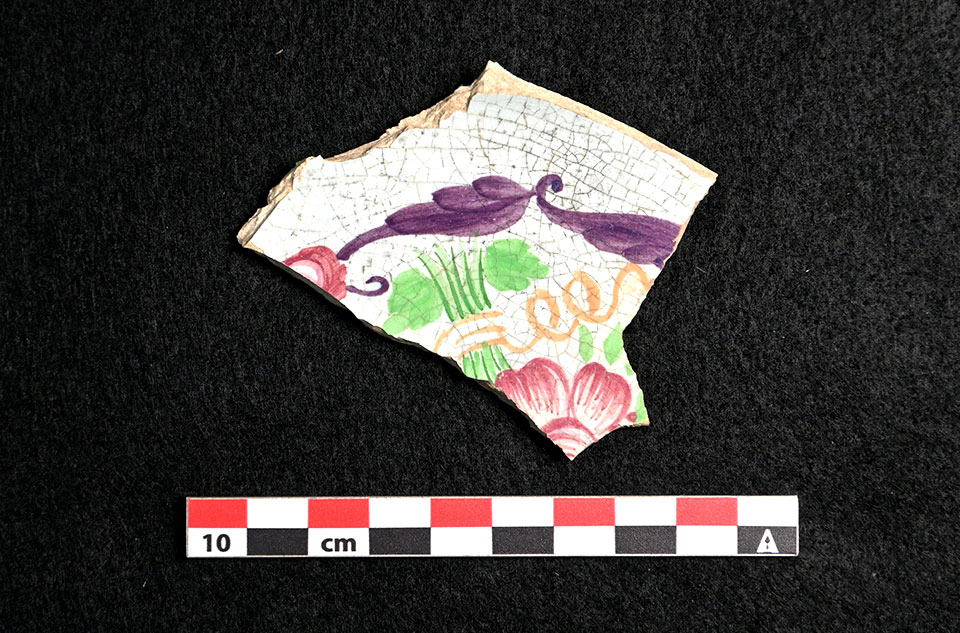
Past residents of Green Spring Farm once owned the complete plate or bowl to which this shard belonged. The plate or bowl was made in England between 1830 and 1860. The hand-painted flowers and leaves on the shard evoke the beautiful gardens that now surround the historic house.
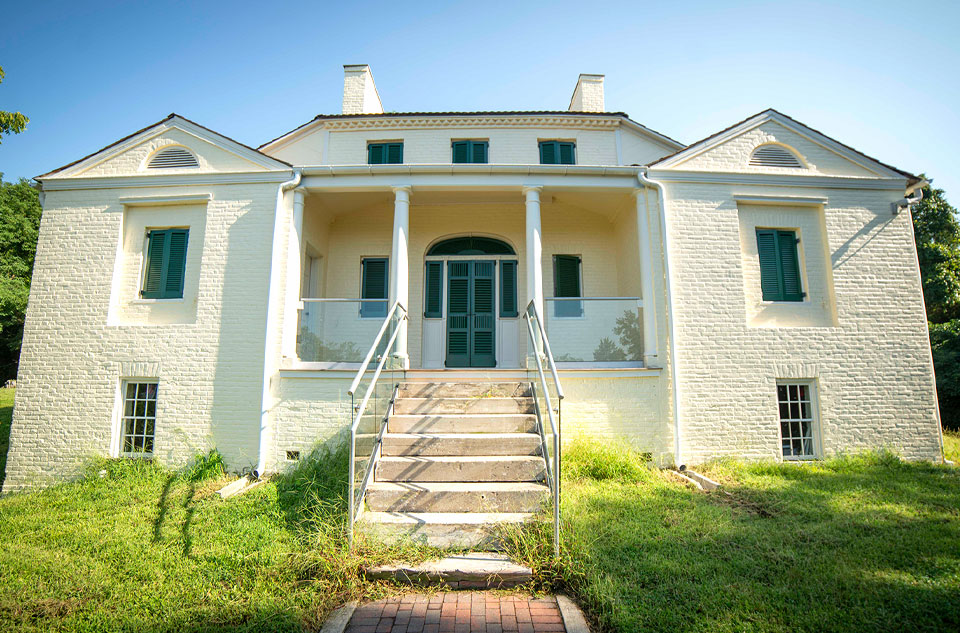
Climb to a hilltop villa with sweeping views of Hybla Valley. Explore the 1825 Federal-style home, farm outbuildings and stories of the Huntley community that reflect America’s quest for freedom.
Travel through time at Sully, where history stretches from the 1700s to the 1950s. Walk through the 1794 house, the kitchen, laundry and dwellings that reveal the lives of enslaved people and families who lived and worked here.
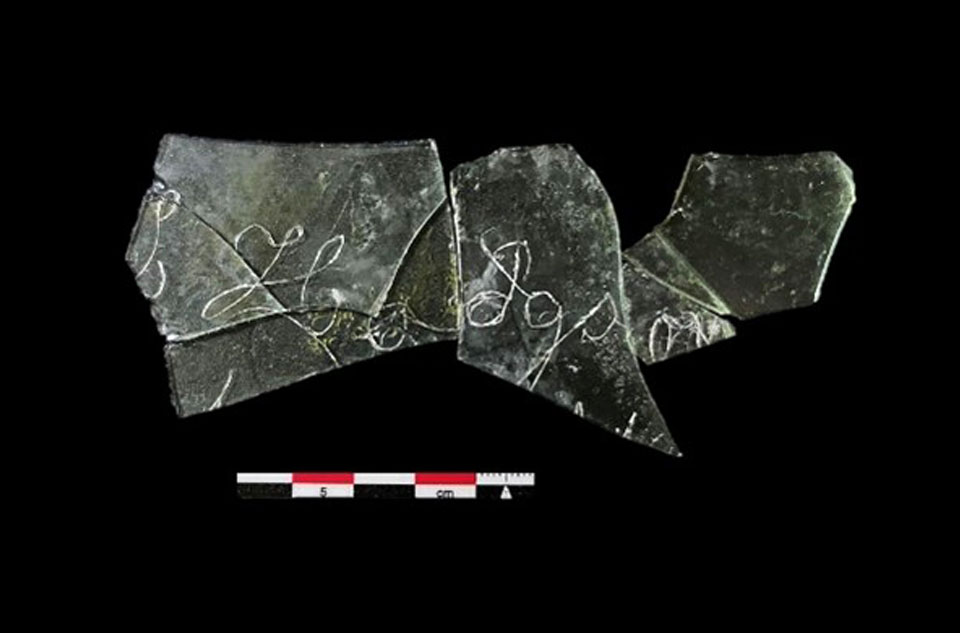
Many children from the Lee, Ludwell, and Hodgson families lived at or visited Sully Plantation during the early 1800s. One child, identified only as "I Hodgson," may have used a very sharp tool to etch their name into the glass surface of an upper-story bedroom windowpane. The identity of I Hodgson remains a mystery.
Step beyond the history books and into the voices, places and moments that shaped Fairfax County. Through articles written by our historians, naturalists and interpreters, discover untold stories, unique perspectives and fresh insights into the people, parks and events that define our past and guide our future.
In 2026, Fairfax County Park Authority invites you to celebrate America’s 250th anniversary with a special edition of the Discovery Trail Map. Walk the grounds of historic sites, explore scenic trails, visit nature centers and uncover the stories that shaped our community and our nation. Collect stamps at parks across the county, earn prizes and connect with the places where history and the future meet.
Coming in Summer of 2026!
See how the landscapes have been shaped over time. How history has unfolded using modern map technology to link the past to now.
Archaeologists excavating a farm site in eastern Fairfax County recovered thousands of artifacts from the area where enslaved laborers and an overseer lived between approximately 1720 and 1769. Among the artifacts are 1,400 colonoware sherds. Colonoware is a low-fired earthenware likely made by enslaved people for their personal use. This collection of colonoware is the second-largest and possibly best-preserved assemblage found in Virginia. The Fairfax County Park Authority Archaeology and Collections Branch has loaned the collection to Thomas Jefferson Foundation archaeologists, who will study it and include the findings in the Digital Archaeological Archive of Comparative Slavery (DAACS).
Taverns, hotels, stores, and industries such as tanneries thrived in Centreville during the early 19th century. By 1861, the village was largely abandoned, and empty tanning vats were repurposed as trash dumps. In 1991, archaeologists discovered this glass whiskey bottle, which features George Washington’s profile on one side. The Baltimore Glass Works produced the bottle between 1820 and 1830.
The Elizabeth Clemments stone at Peake Family Cemetery is an early example of a Baroque-style sandstone marker. Peake Family Cemetery is one of more than 300 known or suspected family cemeteries identified in Fairfax County.
Fairfax County Park Authority archaeologists recovered this pipe bowl along with other artifacts dating to approximately 1820 to 1860, a period when tobacco pipes with this style of decoration were popular. The face on the pipe bowl likely represents a Middle Eastern person, possibly Turkish, based on the mustache and headwear.
This projectile point is made of quartz, a hard, crystalline mineral commonly found in Fairfax County. A skilled Native American crafted this point during the Middle and Late Woodland periods (approximately 400 to 1000 CE). The notches at the point’s base were used to secure it to a shaft, creating an effective hunting tool.
